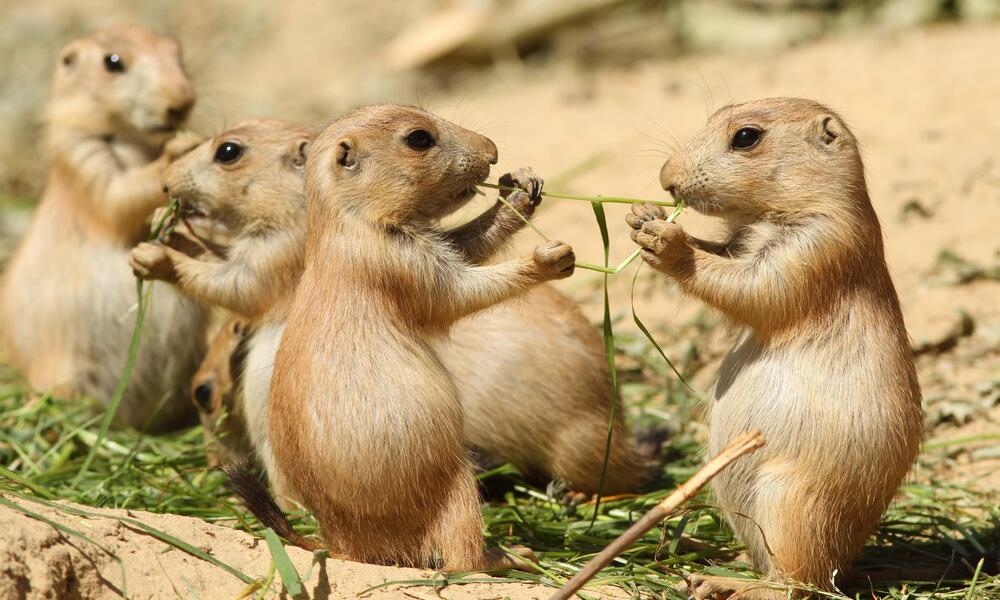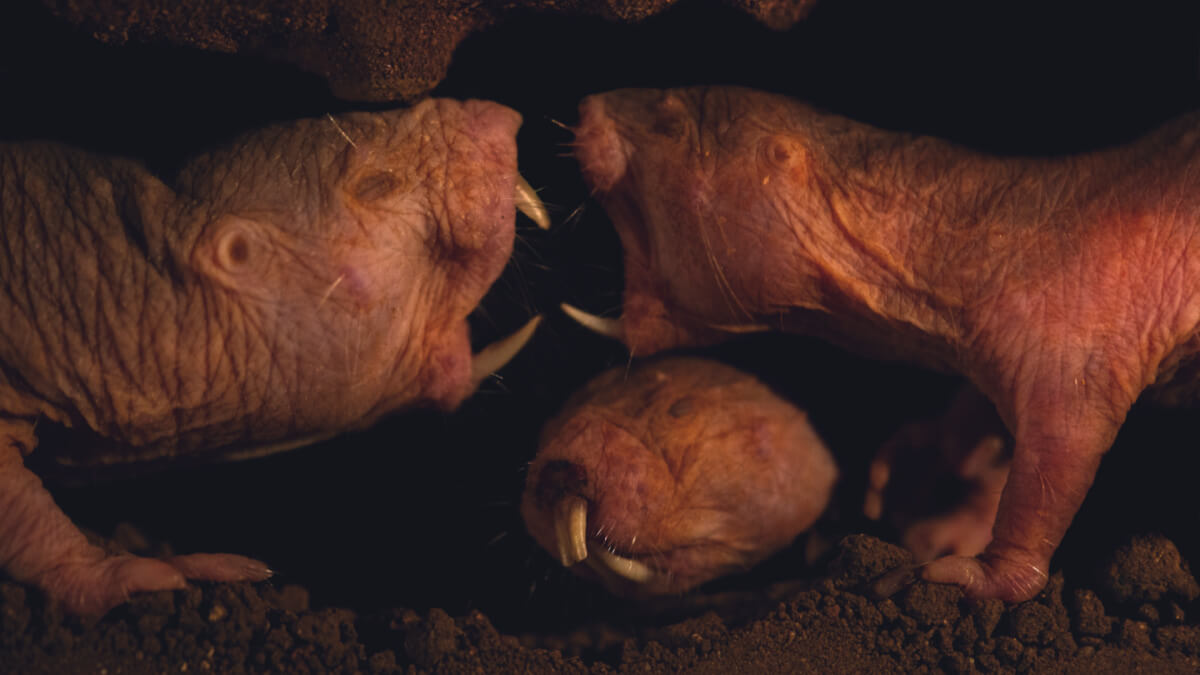Burrowing animals are fascinating creatures that spend much of their lives underground. While many animals dig burrows, not all of them spend most of their time in their underground homes. For the purposes of this article, we will focus on animals that have a network of tunnels and chambers that serve different purposes, such as food storage, sleeping areas, or nurseries.
Burrowing animals play an important role in their ecosystems, as their burrows provide shelter for themselves and other animals. In this article, we will explore the top 9 animals that burrow underground, including rodents, insects, and mammals.
You are reading: Top 9 Animals That Burrow Underground

Top 9 Animals That Burrow Underground
Naked Mole Rat

Naked mole-rats are fascinating creatures that live in complex underground burrow systems. They are found in eastern Africa, specifically in Ethiopia, Kenya, Dijbouti, and Somalia, and live exclusively in underground burrows and tunnels in grassy, semi-arid regions.
Naked mole-rats have wrinkly pink or grayish-pink skin, which is somewhat translucent on their undersides and light purplish-brown on their backs and tails. They have short, broad heads with powerful jaw muscles and very large incisors, which they use to dig tunnels. Naked mole-rats are usually 3 inches (7.5 centimeters) long and weigh 1-1.5 ounces (28-42 grams) .
However, soldiers can weigh up to 2 ounces (57 grams), and the queen, who is the largest member of the colony, can weigh up to 2.5 ounces (71 grams) . Naked mole-rats have high densities of gut fauna that aid in digestion, and they also regularly practice coprophagy, the reingestion of feces, which allows them to maximize their nutrient intake.
Bilby

The bilby, also known as the rabbit-bandicoot, is a desert-dwelling marsupial omnivore that belongs to the order Peramelemorphia. There are two species of bilbies, the greater bilby (Macrotis lagotis) and the lesser bilby (Macrotis leucura), but the latter is believed to be extinct since the 1950s. The term “bilby” is a loanword from the Yuwaalaraay Aboriginal language of northern New South Wales, meaning “long-nosed rat”.
Bilbies are excellent burrowers and build extensive tunnel systems with their strong forelimbs and well-developed claws. They typically make a number of burrows within their home range, up to about a dozen, and move between them, using them for shelter both from predators and the heat of the day.
The female bilby’s pouch faces backward, which prevents the pouch from getting filled with dirt while she is digging. The greater bilby is still found in arid parts of northwestern and central Australia, while the lesser bilby is believed to be extinct.
Moles
Moles are small, burrowing mammals that are known for their ability to dig underground tunnels and burrows. They are found in many parts of the world, including North America, Europe, and Asia. Moles have poorly developed eyes, but they make up for it with their sense of touch. They have very sensitive snouts and long, clawed digits that they use to dig tunnels.
Moles are fossorial, meaning they spend much of their life digging underground burrows. They are amazing tunnelers, with some species able to hollow out a 160-foot (49-meter) burrow in just one night. Moles are insectivores and feed on worms and grubs that they find while digging. They are sometimes considered pests by gardeners and landscapers because their burrowing can damage lawns and gardens.
Read more : 8 Types Of Cod Fish Ranked By Size
However, moles play an important role in their ecosystems by aerating the soil and controlling insect populations.
Mouse Spiders
Mouse spiders are stout black spiders that belong to the genus Missulena. There are 11 known species of mouse spiders, all but one of which are widespread across mainland Australia. Mouse spiders are often confused with funnel-web spiders, but they are not as venomous. Mouse spiders are medium to large in size, ranging from 1 to 3 centimeters (0.39 to 1.18 inches) and have a glossy carapace and high, broad heads with eyes spread out across the front of the head, and short spinnerets in the rear of the abdomen.
Male mouse spiders hold their long pedipalps extended forwards while wandering, presumably seeking an airborne scent associated with the female or its burrow. Once the burrow vicinity is reached, the male taps the ground and silk around the doors until the female emerges. If she is receptive, the male follows her into the burrow where mating occurs.
While mouse spider bites are not common, a few have caused serious effects in humans, with symptoms similar to funnel-web spider envenomation.
Termites
Termites are a group of detritivorous eusocial insects that consume a wide variety of decaying plant material, generally in the form of wood, leaf litter, and soil humus. They are known for their ability to cause significant damage to wooden structures, and their success as a group has led to them colonizing almost every global landmass, with the highest diversity occurring in the tropics where they are estimated to constitute 10% of the biomass.
Termites are distinguished by their moniliform antennae and the soft-bodied and typically unpigmented worker caste for which they have been commonly termed “white ants”; however, they are not ants, to which they are distantly related.
Termites are consumed by a wide variety of predators, and they are important decomposers of decaying plant matter in the subtropical and tropical regions of the world, and their recycling of wood and plant matter is of considerable ecological importance.
There are several types of termites, including the native subterranean termite, the smaller drywood termite, and the invasive Formosan termite. Termite infestations can be difficult to detect, and homeowners should be vigilant about termite control and extermination.
Prairie Dogs
Prairie dogs are herbivorous burrowing ground squirrels that are native to the grasslands of North America. Within the genus are five species: black-tailed, white-tailed, Gunnison’s, Utah, and Mexican prairie dogs.
Prairie dogs are named for their habitat and warning call, which sounds similar to a dog’s bark. They are known for their intricate underground colonies, called prairie dog towns, which create shelter for jackrabbits, toads, and rattlesnakes. Prairie dog families live with hundreds of others in networks of tunnels dug below North America’s grasslands.
Most of these communities, called dog towns, cover less than half a square mile, but one in Texas stretched a hundred miles. Prairie dogs are important to their ecosystems, as their grazing and burrowing attract certain insects that feed a variety of birds, and they are a key food source for everything from coyotes to hawks to endangered black-footed ferrets.
Aardvarks
Aardvarks are medium-sized, burrowing, nocturnal mammals that are native to Africa. They are the only living species of the order Tubulidentata, although other prehistoric species and genera of Tubulidentata are known.
Aardvarks have a long snout, similar to that of a pig, which is used to sniff out food. They are found over much of the southern two-thirds of the African continent, avoiding areas that are mainly rocky.
A nocturnal feeder, they subsist on ants and termites, which they will dig out of their hills using their sharp claws and powerful legs. They also dig to create burrows in which to live and rear their young. Aardvarks are afrotheres, a clade which also includes elephants, manatees, and hyraxes.
Read more : Top 5 Largest Most Dangerous Spiders In Oklahoma
Aardvarks are most active at night and tend to live alone. During the day, they sleep curled up in a ball in their burrows. Aardvarks are hunted by humans for their meat and sometimes used for their body parts as charms. Other animals, like lions, hyenas, and leopards are their natural predators in the wild. Habitat loss is also a threat to aardvarks.
American Badgers
American badgers are small, burrowing mammals that are part of the weasel family. They are found throughout North America, from Canada to Mexico, and are known for their ability to dig underground burrows for protection and sleeping.
Badgers are highly specialized for digging, and they use their large claws to dig into the soil, leaving telltale scratch marks along the sides of the burrow. They typically enlarge foraged-out gopher or other prey holes, or other animal burrows, and their dens range from about 4 feet to 10 feet in depth and 4 feet to 6 feet in diameter.
A typical badger den may be as far as 3 meters below the surface and contain approximately 10 meters of tunnels.
Badgers are fossorial carnivores and prey predominantly on pocket gophers, ground squirrels, moles, marmots, prairie dogs, pika, woodrats, kangaroo rats, deer mice, and voles, often digging to pursue prey into their dens and sometimes plugging tunnel entrances with objects. They do emerge from their burrows when the temperature is above freezing. Badgers are solitary and most active at night, and during the majority of daylight hours, they sleep in their burrows.
American Pika
American pikas are small, round-bodied mammals that are native to North America. They are found above the tree line in alpine terrain, living on rock faces, talus, and cliffs near mountain meadows. They are related to rabbits and hares and have large, round ears.
American pikas have adapted to living in very inhospitable environments and are sensitive to temperatures above 78 degrees Fahrenheit. They do not dig burrows, but they may enlarge dens or nest sites under rocks. When summer temperatures are too high, they are forced to stay underground.
Pikas rely on winter snowpack to insulate them from extreme cold conditions. Although they are considered a high elevation species, pika populations have been found at lower altitudes where deep, cool caves are available, such as the ice tubes in California’s Lava Beds National Monument.
FAQS
1. What is a burrow?
A burrow is a tunnel or hole that an animal digs for habitation (a place to live) or as a temporary refuge (a place of protection) .
2. What is a burrowing animal?
A burrowing animal is one that spends much of its life in its burrow and has a burrow that has a network of tunnels and chambers that serve different purposes, such as food storage, sleeping areas, or nurseries.
3. What are some examples of burrowing animals?
Some examples of burrowing animals include naked mole rats, bilbies, moles, mouse spiders, termites, prairie dogs, aardvarks, American badgers, and American pikas.
4. Why do animals burrow underground?
Animals burrow underground for various reasons, including protection from predators, shelter from harsh weather conditions, and as a place to store food or raise young.
5. Are burrowing animals important to their ecosystems?
Yes, burrowing animals play an important role in their ecosystems. They can help aerate the soil, control insect populations, and provide shelter for other animals.
6. Are burrowing animals considered pests?
Some burrowing animals, such as termites and moles, can be considered pests when they cause damage to structures or gardens. However, they still play an important role in their ecosystems.
Source: https://petstutorial.com
Category: Animals










